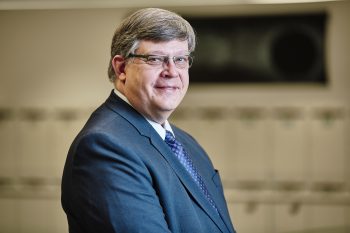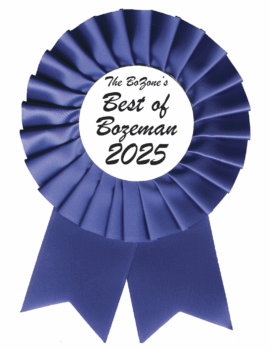Sheppard to explore diagnostic computing at March 9 provost lecture
by Marshall Swearingen, MSU News Service
BOZEMAN — Most people have a vague notion that air travel is incredibly safe. But few can appreciate some of the behind-the-scenes reasons why more than John Sheppard, who has spent three decades creating computer software that can recognize and predict system failures.
Sheppard, professor in the Gianforte School of Computing in MSU’s Norm Asbjornson College of Engineering, will share his perspective as a leading expert in diagnostic computing on March 9 as part of MSU’s annual Provost’s Distinguished Lecturer Series. The online event will stream live starting at 7 p.m.
The title of Sheppard’s talk, “Safe at Every Speed: Expeditions in System Health,” is a tongue-in-cheek reference to the 1965 best-selling critique of automotive safety, as well as an expression of the ambitious engineering goal that seems increasingly within reach given advances in artificial intelligence, in which computers are programmed to have human-like abilities of flexible reasoning.
“I want to give people an appreciation of the benefits of artificial intelligence, but also an understanding of the risks,” Sheppard said. “Artificial intelligence is everywhere now — it may not be obvious, but it’s in just about everything we use, even if in a small way.”

John Sheppard, professor of computer science with the Gianforte School of Computing in the Norm Asbjornson College of Engineering at Montana State University, a leading expert in computer-based diagnostics for improving safety in aeronautics, will share his perspective on diagnostic computing and artificial intelligence on March 9 as part of MSU’s annual Provost’s Distinguished Lecturer Series.
MSU Photo by Adrian Sanchez-Gonzalez
An early curiosity about artificial intelligence led Sheppard to major in computer science as an undergraduate, long before computers were fixtures of everyday life. He also had a longstanding interest in medicine and found that the emerging field of computer-based diagnostics somewhat combined the two. He landed a job in 1986 at a Maryland-based company that developed diagnostic systems for the aerospace industry.
To create actionable safety information from a multitude of vibration, temperature, pressure and electronics sensors in an aircraft, Sheppard pounded out computer code, one keystroke at a time, on a computer that was as big as a kitchen stove despite being inferior to any modern laptop.
“You’d kick off an analysis and it could take several days to get an answer,” he said.
Meanwhile, as the pace of computer innovation accelerated into the ’90s, he earned a master’s and then a doctorate in computer science from Johns Hopkins University, where he focused on artificial intelligence and “machine learning” algorithms that improve automatically though experience.
The computer models for detecting faults had always been what Sheppard and his colleagues called “brittle,” meaning they broke down when encountering the unanticipated. Enabled by more powerful computers, artificial intelligence offered to change that by giving computers the ability to absorb new information and adjust their deductive processes.
By the time Sheppard came to MSU in 2008, such models were increasingly common not only in airplanes but also power plants, satellite networks and other complex systems. The models were also becoming integrated into the design and manufacturing process to further increase safety and reliability.
“In the past 10-15 years, we’ve really moved toward predictive diagnostics, so that we can actually predict failure before it occurs,” he said.
Still, incidents like the highly publicized recent crashes of two Boeing 737 MAX aircraft due to faulty flight systems raise questions about the trade-offs that come with hardwiring computer decision-making into objects formerly controlled by humans with training and intuition. Those questions will only become more pressing with the advent of things like self-driving cars, Sheppard said.
“I’m also becoming much more interested in the social and ethical issues of artificial intelligence,” Sheppard said. “The question really becomes: Are we building these systems responsibly?”
Seeking answers calls for something like humility, even as society can appreciate the fruits of its computer cunning, he said.
The lecture livestream can be viewed at www.montana.edu/pdl. A recording of the lecture will be available for later viewing. •






